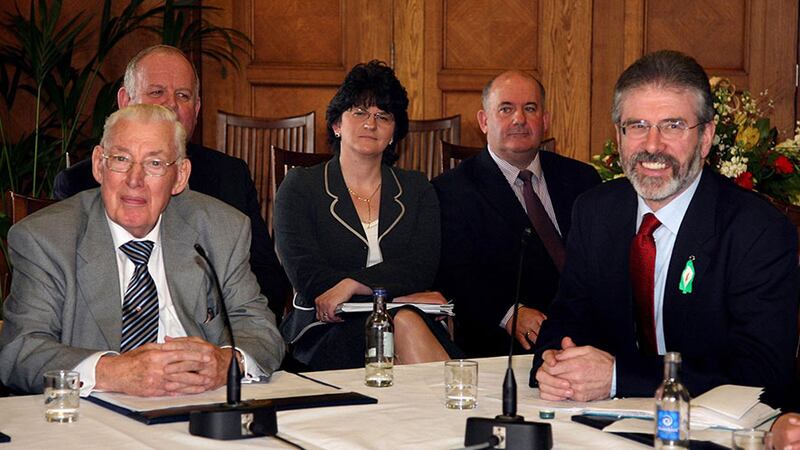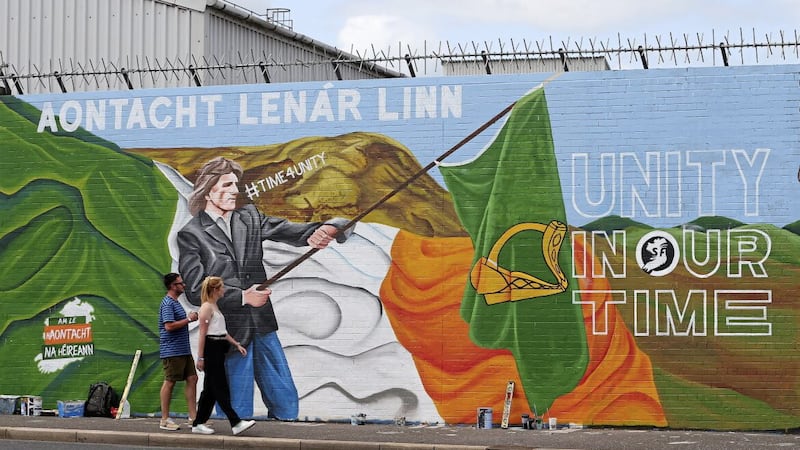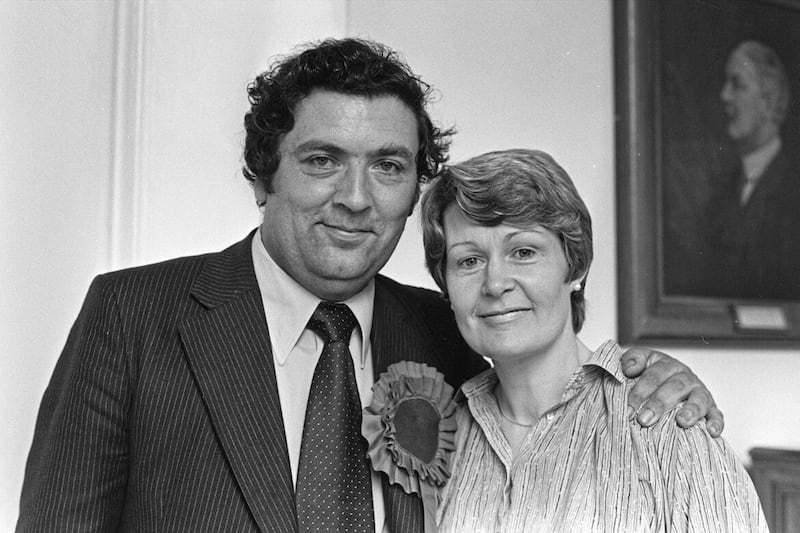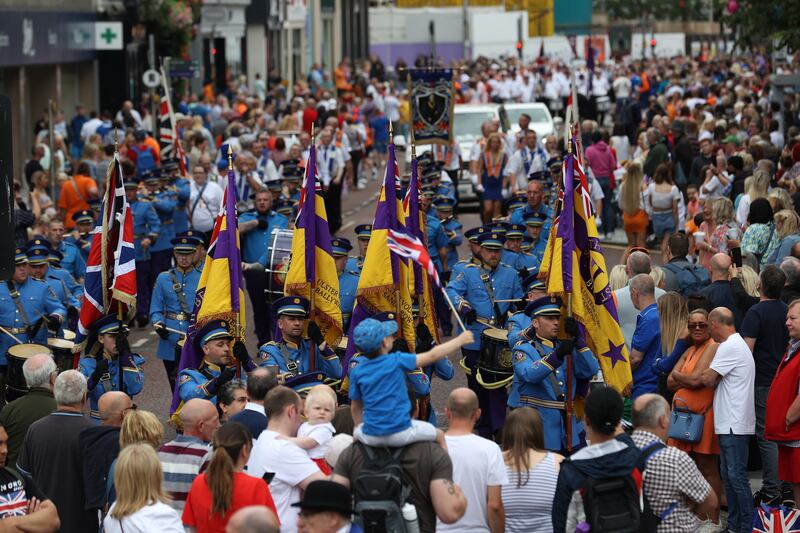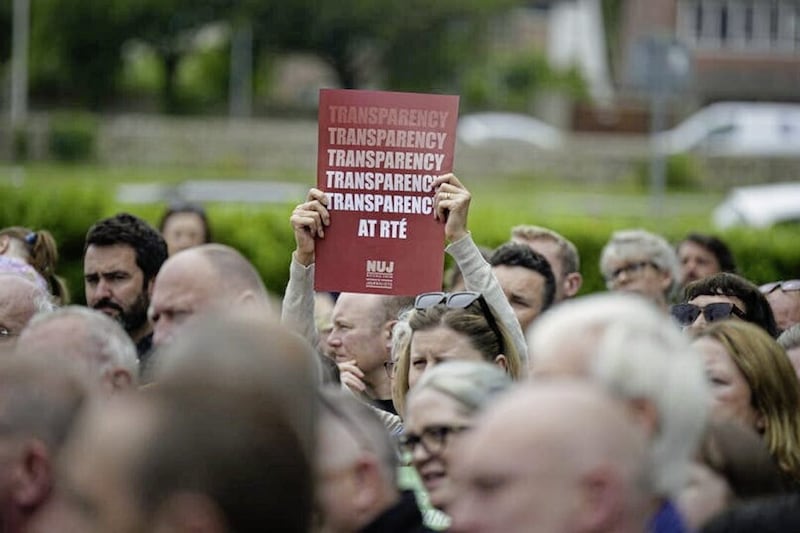EVERYTHING must go. Except the half dozen cuttings, yellowed and curling, that yell, 'hang on!'.
When the mood is strong to have them gone clearing old files is easy, particularly if you hold them just beyond easy reading distance. But then there are folders labelled ‘Crisis summer 2015’.
What could that have been? Not the collapse of Stormont some imagined. No more than a welfare cuts standoff (which collapsed), shooting deaths involving IRA members, unionist leaders competing to demand the toughest investigation, Sinn Féin asking what, what?
All in parallel to the departure, in stages, of Peter Robinson. Plus this paper’s uncovering of apparent skulduggery in dealings with the Irish bad bank/Nama, back in the headlines now thanks to a year’s worth of BBC Spotlight investigation. This is the short version, cuttings need more study.
Memory can fail when you cram in too much over too long a period. So, files, in truth more piles than files, a minority neatly sorted in boxes.
Old paper, how medieval, dusty, bulky and useless unless filed in orderly fashion directly after tearing. Or clipping if you happen to be a neat person, likely these days to be re-classified as a control freak.
In the long ago, skilled and patient people in newspaper and broadcasting offices, called librarians, stocked, maintained and updated cuttings from their own and other organisations, plus other reference works.
In collections known as ‘morgues’, where un-dead facts waited to live again. Pre-Google, all gone now.
With search engines on every gadget, who needs cuttings? And if your engine turns up the fact that a renowned TV director and a well-known actor are sisters, say, but you discover that they are not?
If word spreads that bad people, mistaken people, censorious people, have a habit of tinkering with Wikipedia? Too bad.
Yet keeping files in the space under the stairs or a second-hand filing cabinet - though loose in a drawer, not neatly separated - is a domestic habit almost as unpopular now as smoking at home.
Some are easier to dump than others, though regret sneaks in. The folder called ‘Big Days’ went in the last clear-out, lead item that Paisley-Adams photograph with a table-corner between them, a young Arlene and her still-new DUP colleagues X and Y behind the leaders, just in the shot .
Pleased as punch, were they, smiling properly while old Ian did his statesman gravitas? Can’t be sure now. Who were the other two? Bound to be on the web, surely. Though photos don’t always make the cut.
‘Sinn Féin pre Peace Process’ – why keep that? Well-written up, extensively reported-upon in documentaries that everyone who wants to has already seen.
‘Antis’ – Jim Allister the last man standing, ‘dissidents’ then who are not the dissidents now. ‘Marches, Drumcree’ – history now spent, though with tatters left still containing potential for trouble.
A small heap of old UDA news-sheets – but the Linenhall Library has hundreds of those, as of other groups, properly catalogued.
There’s the occasional ‘mis-filed’ personal paper, some jokes among the grim stuff. So here’s a long-lost fourth wedding photo of our nine-strong party. And a card with warm Christmas wishes from ‘ all the lads in Cage 11’ that looks worth keeping because the distinctive handwriting belongs to the most-revered expert on loyalism.
At first glance the alphabet soup of ‘signatories’ looks like a mini version of a genuine, celebrated glossary. Except in among the OVs and the YCVs are the CIA, and the KGB.
Facts worth cherishing afresh float up from faded paper. Irish Times, November 11, 1991, ‘Taking issue with the male historians’ - strong headline, but the eye-catcher was the photographs: a pensive, delicate-featured Roy Foster, hand to brow, and a glorious Margaret Ward at some launch, glass and cigarette in hand. Ward’s fury then still scorches off the page.
In an excerpted pamphlet called ‘The Missing Sex’ she pointed out that Foster’s ‘Modern Ireland’ had neglected to mention when women got the vote.
Joe Lee’s ‘Ireland 1912- 1985’ contained five substantive references to women: he had defined Maude Gonne first as mother of Sean MacBride and secondly as ‘of Yeats fame’.
Foster had clearly hurt Ward personally, and no wonder, by writing that ‘the Irish feminist movement in this period is nowhere treated adequately - see, in default of anything else, M. Ward, Unmanageable Revolutionaries.’
Ward’s response was that Irish historians’ sexism prevented them realising that feminist studies were to the fore elsewhere. Worth another read, and maybe a handsome frame.
